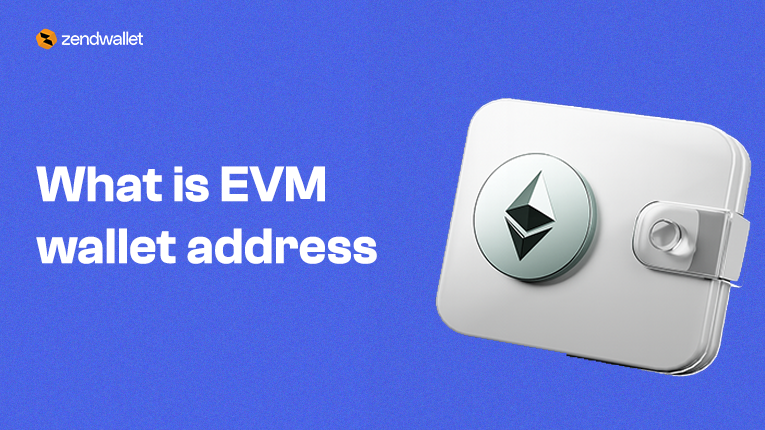Cryptocurrency trading offers an opportunity to engage with the digital economy by buying and selling currencies like Bitcoin and Ethereum.
This trading allows individuals to speculate on price fluctuations and earn profits due to the high volatility of cryptocurrencies.
Two primary ways to engage in cryptocurrency trading are through Contract for-difference (CFD) trading accounts or directly buying and selling the actual coins on exchanges.
Bitcoin is expected to hit a new all-time high in 2024. A recent analysis predicts that Bitcoin (BTC) will establish a new record of $88,000 (€82,000) during the year before bottoming out at roughly $77,000 by the end of 2024. The price of the coin is approximately $43,000.
The surge has investors worldwide taking notice, reflecting a resurgence of confidence and interest in the cryptocurrency market.
The cryptocurrency market presents ample opportunities for traders to participate and profit from its movements.
Therefore, Let’s break down these two cryptocurrency trading methods so you can understand them better.
CFD Trading on Cryptocurrencies
CFD trading lets you speculate on cryptocurrencies’ price movements without owning the underlying assets.
Instead, you contract with a broker to swap the cryptocurrency’s price difference between the contract’s opening and closing dates.
Since CFDs are leveraged products, you only need to deposit a tiny amount of the entire amount, or margin, to trade them.
CFD trading is prevalent because it enables traders to profit from increasing and falling prices; it also frequently offers leverage, which lets you trade with more money than you have.
Buying and selling cryptocurrencies via an exchange
Exchanges for cryptocurrencies, like Zendwallet and online crypto markets, are used to purchase, sell, and exchange different cryptocurrencies.
You must register for an account on an exchange before you can begin trading. After registering, you can compensate for the entire cost of the cryptocurrency you want to buy.
After buying, you can store your digital tokens in a wallet until you decide to sell. It’s important to note that using these exchanges involves a learning curve.
You’ll need to familiarise yourself with the technology and understand how to interpret market data effectively.
Furthermore, depending on your selected platform, many exchanges may charge maintenance fees for your account and have deposit caps.
Growing Popularity of Cryptocurrency Trading
Since 2009, Bitcoin first surfaced online, and the popularity of cryptocurrency trading has increased drastically.
From just 66 different cryptocurrencies in 2013, There are now 10,000 cryptocurrencies on the market as of February 2022. This increase demonstrates how cryptocurrencies are gaining traction in the financial sector.
Cryptocurrencies, which rely on cryptography to safeguard transactions, are digital assets created using blockchain technology. They are not physical like fiat currencies issued by governments worldwide; instead, they are composed of bits and bytes of data.
Furthermore, no central organization or authority—like a central bank—issues cryptocurrencies or controls how they are distributed across the system. Cryptocurrencies are not regarded as legal cash since no government agency controls them.
How does cryptocurrency trading work?
Trading cryptocurrencies on Zendwallet is designed to be straightforward and user-friendly, making it accessible whether you’re a beginner or an experienced trader.
Here’s a detailed look at how cryptocurrency trading works on Zendwallet:
1. Create an Account: First, sign up for a Zendwallet account. This quick process requires basic information such as your name, email address, and a strong password.
2. Complete KYC Verification: Zendwallet may require users to complete a Know Your Customer (KYC) verification process to comply with financial regulations and ensure security. This typically involves providing identification documents such as a passport or driver’s license.
3. Deposit Funds: Once your account is verified, you can deposit funds into your Zendwallet account. Supported deposit methods may include bank transfers, credit/debit cards, or cryptocurrency transfers.
4. Choose a Trading Pair: Zendwallet offers a variety of cryptocurrency trading pairs, allowing you to trade between different cryptocurrencies or against fiat currencies like USD or EUR. Select the trading pair you’re interested in.
5. Select Order Type: Decide whether you want to place a market order, where your trade is executed immediately at the current market price, or a limit order, where you specify the price you want your trade to be executed.
6. Enter Trade Details: Enter the amount of cryptocurrency you want to buy or sell and review the order details before confirming.
7. Execute Trade: Once satisfied with the trade parameters, submit your order. Zendwallet will execute the trade based on your instructions.
Zendwallet offers the best cryptocurrency trading platform. Our platform provides users with a convenient and secure platform to engage in digital asset trading.
How does cryptocurrency work?
Cryptocurrencies operate on a decentralized blockchain system, a public ledger updated and maintained by currency holders. Through mining, cryptocurrency units are created by solving complex mathematical problems using computer power.
Users can purchase cryptocurrencies from brokers and store them in cryptographic wallets for spending or investment purposes. It’s important to note that owning cryptocurrency means owning a digital key that facilitates transactions without a trusted intermediary.
Despite Bitcoin’s inception in 2009, the full potential of cryptocurrencies and blockchain technology is still unfolding. The financial industry’s possibilities extend beyond currency, including actions involving bonds, stocks, and other assets. As the technology evolves, its applications are expected to diversify and grow.
How do cryptocurrency markets work?
Since cryptocurrency markets are decentralized, no central authority, such as a government, issues or supports them. Instead, they traverse a computer network.
However, cryptocurrency can be bought, traded on exchanges, and stored in “wallets.” In contrast to traditional money, cryptocurrencies are nothing more than a blockchain-based shared digital ownership record.
Users move cryptocurrency units (like Bitcoins) to another user’s digital wallet at their own risk. A transaction must be validated and added to the blockchain through the mining process to be considered final.
Furthermore, this is the usual process by which new cryptocurrency tokens are generated.
What is Blockchain?
Blockchain is a digital ledger that records cryptocurrency transaction history, detailing ownership changes over time. Transactions are organized into “blocks,” with new blocks added at the front. This technology boasts unique security features.
1. Network Consensus: Blockchain data is distributed across multiple computers in a network, making it transparent and resistant to alteration. No single weak point exists, minimizing vulnerability to hacks traded.
2. Cryptography: Blocks are linked using complex mathematical algorithms. Any attempt to alter data breaks cryptographic links between blocks, quickly identifying fraud.
What is cryptocurrency mining?
The process of confirming and adding recent transactions to the decentralized blockchain is known as cryptocurrency mining.
Here’s a detailed breakdown of how it works:
1. Checking Transactions Mining computers, or nodes, select pending transactions from a pool. They then verify these transactions to ensure that the sender has enough funds and that the transaction details match the records stored in the blockchain. Additionally, the sender’s authorization using their private key is confirmed.
2. Creating a New Block: Mining computers compile the transactions into a new block once the transactions are verified. To add this block to the blockchain, they must solve a complex mathematical problem called a cryptographic puzzle.
This process requires significant computational power and energy. When a computer successfully solves the puzzle and generates the cryptographic link to the previous block, it adds the new block to its blockchain version. Finally, the updated blockchain is broadcast across the network to ensure consensus among all nodes.
What Moves Cryptocurrency Markets?
Cryptocurrency markets are primarily influenced by supply and demand dynamics. However, unlike traditional currencies, they are decentralized, making them less susceptible to economic and political factors. Despite the inherent uncertainty surrounding cryptocurrencies, several vital factors can significantly impact their prices:
1. Supply: The total number of coins in circulation and the rate at which new coins are released, destroyed, or lost can affect their scarcity and value.
2. Market capitalization refers to the total value of all coins and how users perceive this value to evolve. Overages in market capitalization can influence investor sentiment and trading activity.
3. Press coverage: Media portrayal and the amount of coverage cryptocurrencies receive can sway public perception and investor confidence. Positive or negative news stories can lead to price fluctuations.
4. Integration: The degree to which cryptocurrencies integrate into existing infrastructure, such as e-commerce payment systems, can impact their adoption and usage. Increased integration often correlates with higher demand and price appreciation.
5. Key events: Major events like regulatory updates, security breaches, or economic downturns can significantly impact cryptocurrency markets. Regulatory actions by governments, security vulnerabilities, and macroeconomic trends can all affect investor sentiment and market dynamics.
What is Spread in Cryptocurrency trading:
– In cryptocurrency trading, the ‘spread’ is the difference between the buy (bid) price and the sell (ask) price. A narrower spread often indicates a more liquid market.
– If you’re looking to buy a cryptocurrency, you would pay the buy price. Conversely, you would accept the selling price if you want to sell.
What is a ‘Lot’ in Cryptocurrency Trading?
A ‘lot’ in cryptocurrency trading is a batch of tokens used to standardize deal sizes. These lots are typically small, frequently consisting of just one Bitcoin unit due to the significant volatility of cryptocurrencies.
In cryptocurrency, a lot size is the amount of a specific coin you purchase or sell in a single transaction. In essence, it’s the number of units you exchange at once. Lot sizes are frequently set in advance and differ significantly throughout exchanges and trading systems.
What is Leverage in Cryptocurrency Trading:
– Using leverage, traders can invest a sizable portion of their capital without committing the whole amount. With a modest initial payment, you can start a chic highlighter-value position.
Leverage raises the possibility of significant losses that could exceed your initial investment and dramatically boosts possible gains.
Effective risk management techniques are essential since leveraged trading has several dangers. This entails attentively observing market movements and placing stop-loss orders to limit potential losses.
What is the margin in cryptocurrency trading?
An essential component of leveraged trading is the margin. It’s the word for your initial payment to start and keep up a leveraged position.
Remember that the amount of margin you need to trade cryptocurrencies on margin will depend on your broker and the volume of your trades.
Typically, the margin is stated as a percentage of the entire position. For example, 10% of the position’s total value may need to be paid to open a trade on Bitcoin (BTC). You would need to deposit $500 instead of $5000.
What is a pip in cryptocurrency trading
In cryptocurrency trading, a “pip” refers to a currency pair’s smallest unit of price movement. Typically, in higher-value cryptocurrencies like Bitcoin, a pip is equivalent to a one-dollar movement in the price. For instance, if Bitcoin’s price increases from $190.00 to $191.00, it is said to have moved by one pip.
For lower-value cryptocurrencies, the definition of a pip can vary, sometimes representing a movement of a cent or even a fraction of a cent, depending on how these currencies are priced on the market. This variation emphasizes the importance of understanding your trading platform’s pricing and valuation details.
Before engaging in trading, you must familiarize yourself with how pips are defined for the cryptocurrency you are interested in. This understanding will help you better measure price changes and manage your trades effectively. Always check the trading platform’s guidelines to ensure you have a clear understanding of the price levels and increments specific to your trades.
Final Thought
Understanding these fundamentals of cryptocurrency trading enables you to negotiate the cryptocurrency markets and make wise trading choices.
Whether an expert trader or new to digital currencies, Zendwallet offers the best crypto exchange platform that combines ease of use with in-depth market analysis, ensuring you’re well-prepared to jump into cryptocurrency trading.
Watch https://youtu.be/Pw_AJtjIfmI?si=kLwo0ea769bpTwZs to learn more about crypto trading
Related Articles :
Cryptocurrency: Which to Invest in?
Where to Buy Cryptocurrency in Africa
Where to Buy Cryptocurrency in Nigeria
What is Cryptocurrency: Types, Benefits, History & More
Best Cryptocurrency Trading Platform in Nigeria | Zendwallet



